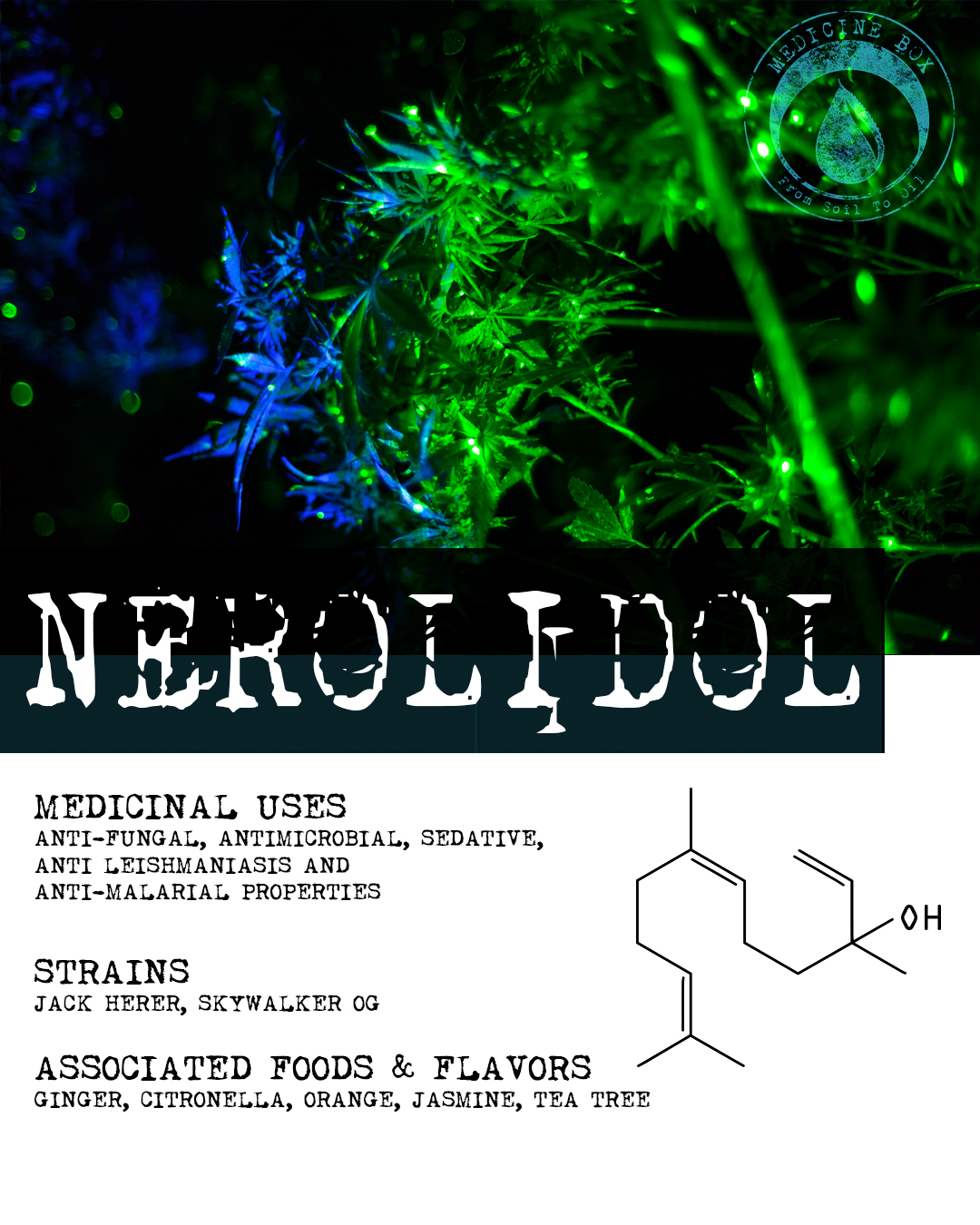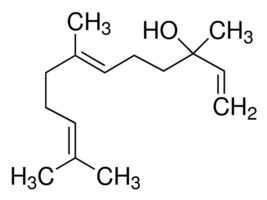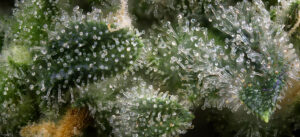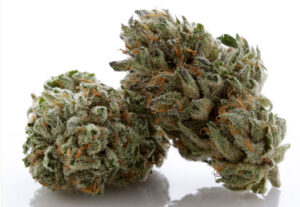
Nerolidol, also known as peruviol and penetrol , is a naturally occurring sesquiterpene alcohol found in the essential oils of many types of plants and flowers. There are two isomers of nerolidol, cis and trans, which differ in the geometry about the central double bond. Nerolidol is found in neroli, ginger, jasmine, lavender, tea tree, Cannabis sativa, and lemon grass, and is a dominant scent compound in Brassavola nodosa.

The aroma of nerolidol carries tones of citrus, floral, waxy, woody and reminiscent of fresh bark. It is used as a flavoring agent and in perfumes. It is also used in non-cosmetic products such as detergents and cleansers. It is also currently under testing as a skin penetration enhancer for the transdermal delivery of therapeutic drugs.
Additionally, it is known for various biological activities include antioxidant, anti fungal, anticancer, and antimicrobial activity.

Besides contributing the the scent profile, nerolidol can also be used as an antifungal agent or as a natural sleep aid. A study published in 2007 examined nerolidol's effects on skin lesions in guinea pigs and found that it was clinically effective at treating lesions within the first week of application. Although research is still needed on human participants, these early findings are encouraging. A more recent study from 2013 focused on nerolidol's effects on the hippocampus of mice. The researchers discovered that the terpene displayed sedative effects in all animals subjects. Again, more research is needed on humans to validate these findings, but it is not unreasonable that the same effect would still apply.
 Benefits
Benefits
Studies of nerolidol and similar terpenes has revealed multiple medicinal efficacies that could help patients with diseases as wide ranging as bacterial infections, cancer, malaria, skin lesions, ulcers, and—like many other terpenes—any condition involving systemic inflammation (including arthritis, asthma, and fibromyalgia).
- A 2016 study entitled “Nerolidol: A Sesquiterpene Alcohol with Multi-Faceted Pharmacological and Biological Activities” that was published in the journal Molecular Diversity Preservation International found that nerolidol delivers multiple medical benefits, including its potential role in the treatment of cancer, malaria, ulcers, and any of the thousands of diseases and conditions based in inflammation.
Concluded the study’s researchers, “Nerolidol is one of the common components found in the essential oil of various medicinal plants. A majority of the studies [reviewed] reveal that nerolidol is the major constituent in many plants that accounts for their pharmacological and biological activities, such as anti-microbial, anti-parasitic, anti-biofilm, anti-oxidant, anti-nociceptive, anti-inflammatory, anti-ulcer, skin penetration enhancer, insect repellent, and anti-cancer properties.”
- A 2016 study entitled “Neuroprotective Effect of Nerolidol Against Neuroinflammation and Oxidative Stress Induced by Rotenone” and published in the journal BMC Neuroscience revealed the neuroprotective effects of nerolidol as derived from its anti-inflammatory and antioxidant capabilities. The study examined the efficacy of nerolidol for diseases of neurodegeneration, specifically Parkinson’s Disease (PD).
 Reported the researchers, “In conclusion, our study suggests that nerolidol supplementation ameliorates [improves]…neurodegeneration through its antioxidant and anti-inflammatory activities. The present results highlight the therapeutic potential of nerolidol in neurodegenerative diseases, including PD.”
Reported the researchers, “In conclusion, our study suggests that nerolidol supplementation ameliorates [improves]…neurodegeneration through its antioxidant and anti-inflammatory activities. The present results highlight the therapeutic potential of nerolidol in neurodegenerative diseases, including PD.”
The study’s authors highlighted the need for additional research into the healing dynamics behind nerolidol. “Further study is required to fully understand the molecular mechanisms of how nerolidol potentiates antioxidant and anti-inflammatory activities,” concluded the research.
- A 2007 study entitled “Antifungal Effect of Eugenol and Nerolidol” that was published in the journal Biological and Pharmaceutical Bulletin investigated the effectiveness of nerolidol as a topical treatment for skin lesions. “Nerolidol improved the skin lesions infected by M. gypseum,” reported the researchers. The study concluded, “These results suggest that…nerolidol could apply supplementary antifungal agents.”
- A 2003 study entitled “Sensitization of Staphylococcus Aureus and Escherichia Coli to Antibiotics by the Sesquiterpenoids Nerolidol, Farnesol, Bisabolol, and Apritone” and published in the journal Antimicrobial Agents and Chemotherapy found nerolidol and three of its peer terpenes to be capable agents for fighting bacterial infections.
Sesquiterpenoids Nerolidol, Farnesol, Bisabolol, and Apritone” and published in the journal Antimicrobial Agents and Chemotherapy found nerolidol and three of its peer terpenes to be capable agents for fighting bacterial infections.
Strains with Nerolidol
It is not as easy to find strains high in this terpene, they still exist. To find strains that contain respectable levels of trans-nerolidol, just use your nose!
Seek out that easily distinguishable woody, citrusy, floral aroma. Or, find cannabis strains from these families:
Tangilope
Royal Jack Automatic
Royal Cookies
Sour Kush
Sweet Skunk
Skywalker OG